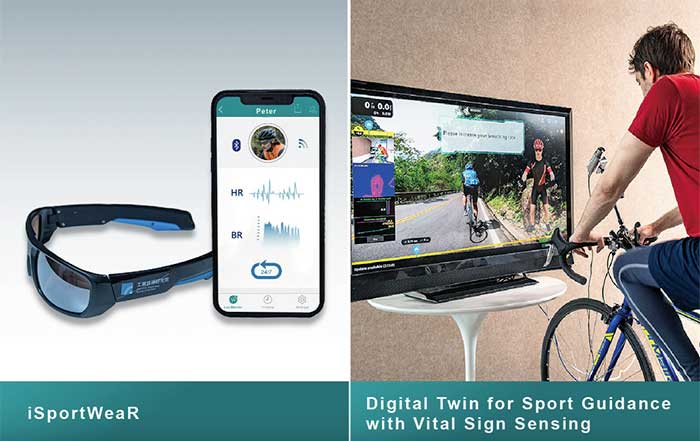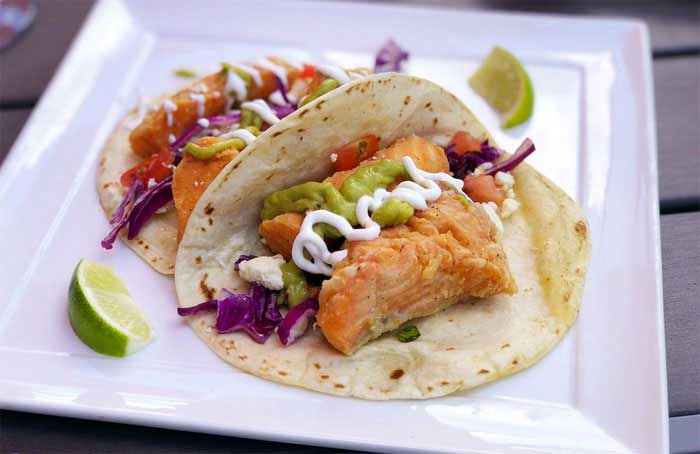The world of running has seen significant growth over the past few years, with marathons becoming increasingly popular. One of the most notable events is the London Marathon, which has set a new world record for applications in 2025. Over 840,000 hopefuls applied to participate in the 2025 edition, surpassing the previous record of 578,304 set in 2024. This surge in applications is a testament to the growing interest in marathons and the impact they have on the community.
The London Marathon is not the only event experiencing a surge in popularity. The World Marathon Challenge, which involves running seven marathons on seven continents in seven days, is also gaining traction. This logistical and physical challenge requires competitors to run the standard 42.2 km marathon distance in Antarctica, Africa, Australia, Asia, Europe, South America, and North America within 168 hours. The event is a true test of endurance and has become a significant draw for athletes worldwide.
Another notable event is the Milano Marathon, which is expected to welcome back over 35,000 runners in 2025. This marathon is known for its modern and participatory nature, offering a smooth loop route, cheering points, and a party atmosphere. The event also includes a training program in collaboration with running clubs across Italy, making it an attractive option for both experienced and novice runners.
In contrast, the Tokyo Marathon, which is one of the largest marathons in Asia, had a field size of 38,000 runners in 2024. The event includes a variety of races, including the marathon, 10.7 km race, and wheelchair events. The Tokyo Marathon is a well-organized event with a strong focus on inclusivity and community engagement.
Marathon Participation Trends
The London Marathon has seen a significant increase in applications from women, with 49% of applicants being female in 2025. This is a notable shift from previous years, where women made up around 43% of applicants. This trend towards gender parity is a positive development in the world of marathons, reflecting a broader shift towards greater inclusivity and diversity.
Marathon Training Tips
Training for a marathon requires dedication, discipline, and a well-planned strategy. Here are some tips to help you prepare for the challenge:
#Start Early
Begin your training at least six months before the event. This allows for a gradual increase in distance and intensity, reducing the risk of injury and burnout.
#Gradual Increase in Distance
Start with shorter distances and gradually increase your runs over time. This helps your body adapt to the physical demands of running longer distances.
#Incorporate Cross-Training
Include activities like cycling, swimming, or strength training to improve your overall fitness and reduce the risk of overuse injuries.
#Listen to Your Body
Pay attention to your body's signals. If you feel pain or discomfort, take a break or adjust your training plan accordingly.
#Rest and Recovery
Allow for adequate rest and recovery time between runs. This helps your body repair and rebuild, ensuring you are ready for the next training session.
#Nutrition and Hydration
Stay hydrated and fuel your body with nutritious foods. This is crucial for maintaining energy levels during long runs.
#Mental Preparation
Prepare yourself mentally for the challenges you will face during the marathon. Visualize yourself completing the course and focus on your goals.
Conclusion
Marathons have become a significant part of the global sports landscape, attracting millions of participants each year. The London Marathon, World Marathon Challenge, Milano Marathon, and Tokyo Marathon are just a few examples of the many events that take place annually. With proper training and preparation, anyone can participate in a marathon and experience the sense of accomplishment and community that comes with it.
Marathons Around the World in 2025
The world of marathons is set to be even more exciting in 2025, with several notable events taking place across different continents. Here are some of the key events to look forward to:
World Marathon Challenge
The World Marathon Challenge is a unique event that requires participants to run seven marathons on seven continents in seven days. This logistical and physical challenge is a true test of endurance and has become a significant draw for athletes worldwide. The event is expected to take place in 2025, with competitors facing the daunting task of running seven marathons in just seven days.
London Marathon
The London Marathon is one of the most iconic events in the world of marathons. In 2025, the event is expected to attract over 840,000 applicants, surpassing the previous record set in 2024. The marathon is known for its scenic route, which takes runners through some of London's most famous landmarks, including Greenwich, Tower Bridge, the London Eye, and Big Ben. The event also raises significant funds for charity, making it a significant contributor to the global fundraising landscape.
Milano Marathon
The Milano Marathon is another notable event in 2025. This marathon is known for its modern and participatory nature, offering a smooth loop route, cheering points, and a party atmosphere. The event includes a training program in collaboration with running clubs across Italy, making it an attractive option for both experienced and novice runners. The Milano Marathon is expected to welcome back over 35,000 runners in 2025, continuing its tradition of being one of the fastest marathons in Italy.
Tokyo Marathon
The Tokyo Marathon is one of the largest marathons in Asia, with a field size of 38,000 runners in 2024. The event includes a variety of races, including the marathon, 10.7 km race, and wheelchair events. The Tokyo Marathon is a well-organized event with a strong focus on inclusivity and community engagement. In 2025, the event is expected to continue its tradition of attracting a diverse range of participants from around the world.
2025 promises to be an exciting year for marathons, with several notable events taking place across different continents. From the World Marathon Challenge to the London Marathon, Milano Marathon, and Tokyo Marathon, there is something for every runner. Whether you are a seasoned athlete or just starting out, these events offer a unique opportunity to push your limits and experience the thrill of marathon running.
How to Train for a Marathon
Training for a marathon requires dedication, discipline, and a well-planned strategy. Here are some tips to help you prepare for the challenge:
Start Early
Begin your training at least six months before the event. This allows for a gradual increase in distance and intensity, reducing the risk of injury and burnout.
Gradual Increase in Distance
Start with shorter distances and gradually increase your runs over time. This helps your body adapt to the physical demands of running longer distances.
Incorporate Cross-Training
Include activities like cycling, swimming, or strength training to improve your overall fitness and reduce the risk of overuse injuries.
Listen to Your Body
Pay attention to your body's signals. If you feel pain or discomfort, take a break or adjust your training plan accordingly.
Rest and Recovery
Allow for adequate rest and recovery time between runs. This helps your body repair and rebuild, ensuring you are ready for the next training session.
Nutrition and Hydration
Stay hydrated and fuel your body with nutritious foods. This is crucial for maintaining energy levels during long runs.
Mental Preparation
Prepare yourself mentally for the challenges you will face during the marathon. Visualize yourself completing the course and focus on your goals.
2025 Marathon Events Timeline
World Marathon Challenge
7 marathons, 7 continents, 7 days
London Marathon
840,000+ applicants expected
Milano Marathon
35,000+ runners expected
Tokyo Marathon
38,000+ runners expected
Training Schedule
Here is a sample training schedule to help you prepare for a marathon:
Week 1-2:
- 3-4 runs per week, each lasting 30-45 minutes
- Focus on building endurance and getting used to running
Week 3-4:
- 4-5 runs per week, each lasting 45-60 minutes
- Start incorporating longer runs and hill training
Week 5-6:
- 5-6 runs per week, each lasting 60-90 minutes
- Continue building endurance and incorporating speed work
Week 7-8:
- 6-7 runs per week, each lasting 90-120 minutes
- Focus on longer runs and incorporating rest days
Week 9-10:
- 7-8 runs per week, each lasting 120-150 minutes
- Continue building endurance and incorporating speed work
Week 11-12:
- 8-9 runs per week, each lasting 150-180 minutes
- Focus on longer runs and incorporating rest days
Week 13-14:
- 9-10 runs per week, each lasting 180-210 minutes
- Continue building endurance and incorporating speed work
Week 15-16:
- 10-11 runs per week, each lasting 210-240 minutes
- Focus on longer runs and incorporating rest days
Week 17-18:
- 11-12 runs per week, each lasting 240-270 minutes
- Continue building endurance and incorporating speed work
Week 19-20:
- 12-13 runs per week, each lasting 270-300 minutes
- Focus on longer runs and incorporating rest days
Week 21-22:
- 13-14 runs per week, each lasting 300-330 minutes
- Continue building endurance and incorporating speed work
Week 23-24:
- 14-15 runs per week, each lasting 330-360 minutes
- Focus on longer runs and incorporating rest days
Week 25-26:
- 15-16 runs per week, each lasting 360-390 minutes
- Continue building endurance and incorporating speed work
Week 27-28:
- 16-17 runs per week, each lasting 390-420 minutes
- Focus on longer runs and incorporating rest days
Week 29-30:
- 17-18 runs per week, each lasting 420-450 minutes
- Continue building endurance and incorporating speed work
Week 31-32:
- 18-19 runs per week, each lasting 450-480 minutes
- Focus on longer runs and incorporating rest days
Week 33-34:
- 19-20 runs per week, each lasting 480-510 minutes
- Continue building endurance and incorporating speed work
Week 35-36:
- 20-21 runs per week, each lasting 510-540 minutes
- Focus on longer runs and incorporating rest days
Week 37-38:
- 21-22 runs per week, each lasting 540-570 minutes
- Continue building endurance and incorporating speed work
Week 39-40:
- 22-23 runs per week, each lasting 570-600 minutes
- Focus on longer runs and incorporating rest days
Week 41-42:
- 23-24 runs per week, each lasting 600-630 minutes
- Continue building endurance and incorporating speed work
Reaching the Finish Line
Training for a marathon requires dedication, discipline, and a well-planned strategy. By starting early, gradually increasing distance, incorporating cross-training, listening to your body, and focusing on nutrition and hydration, you can prepare yourself for the challenge of running a marathon. Remember to stay mentally prepared and focused on your goals. With the right training, you can achieve your marathon goals and experience the thrill of crossing the finish line.










